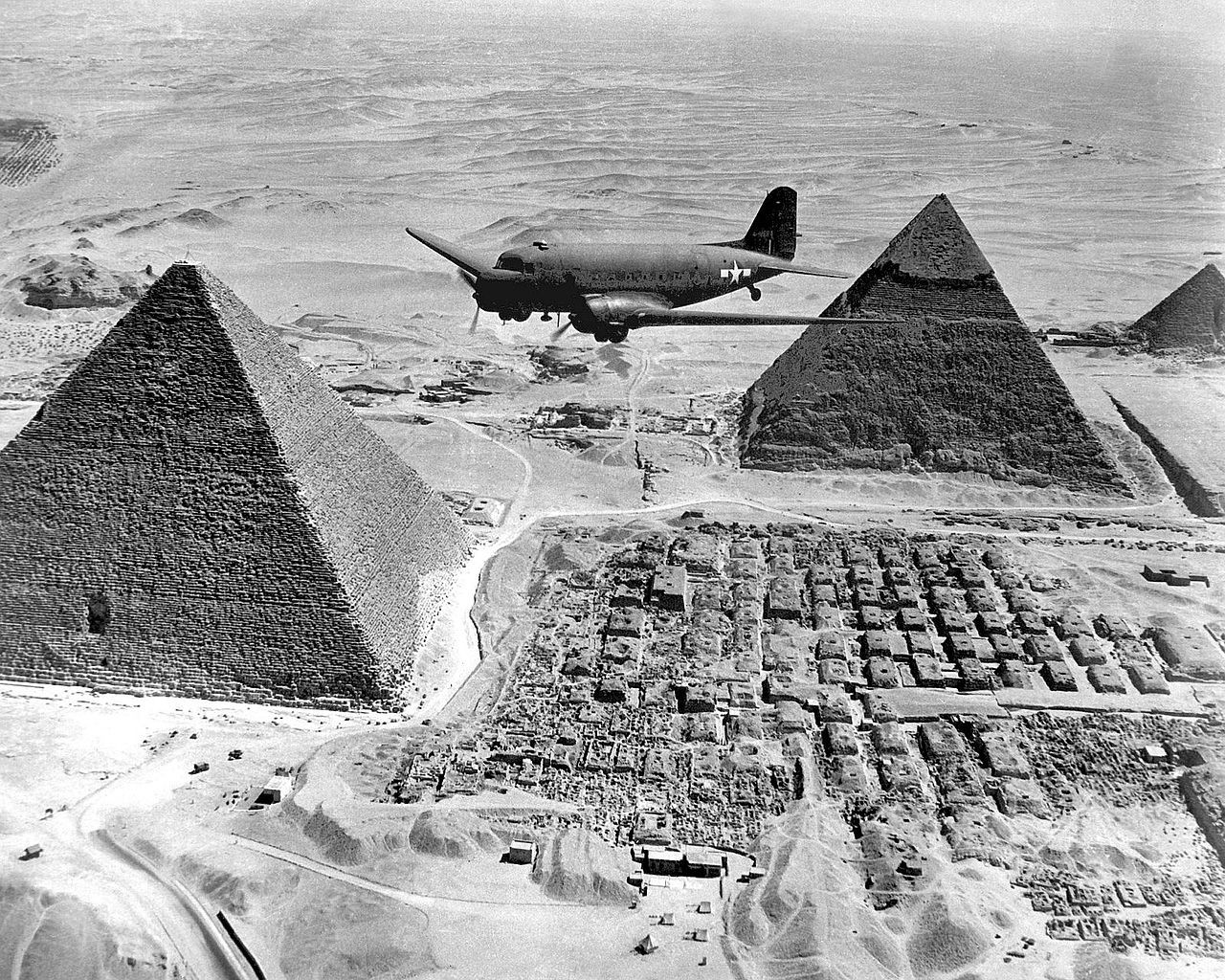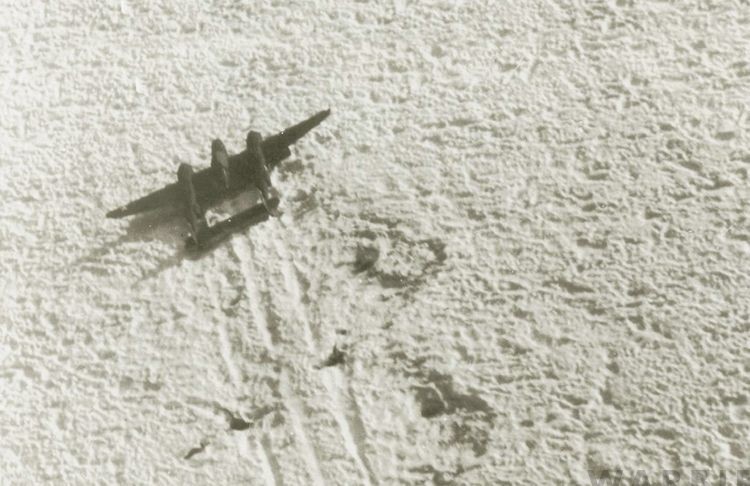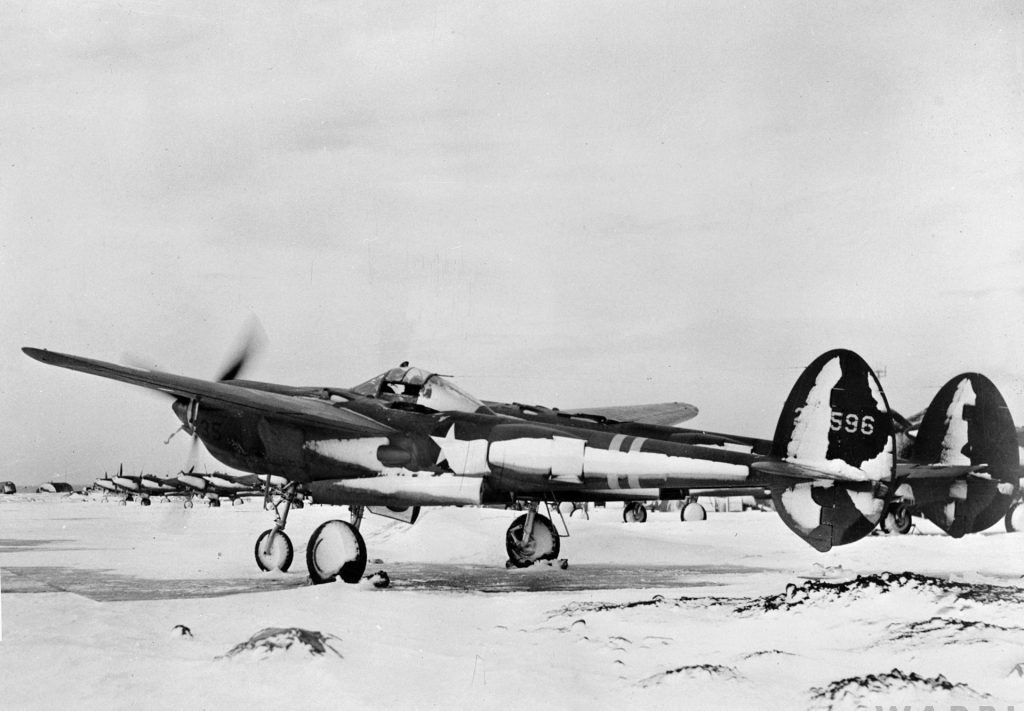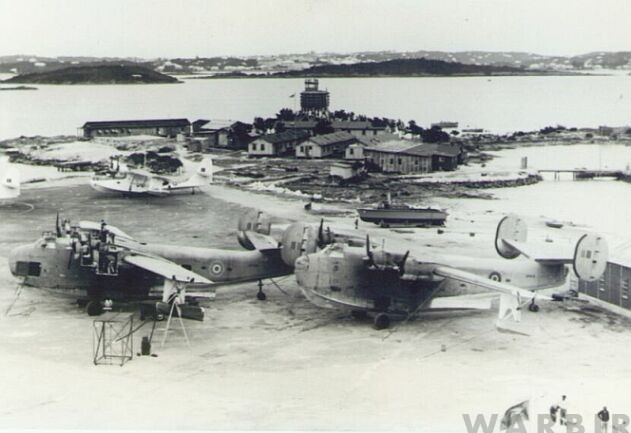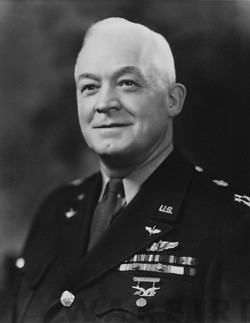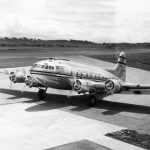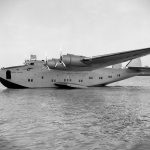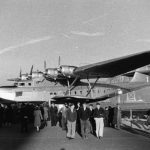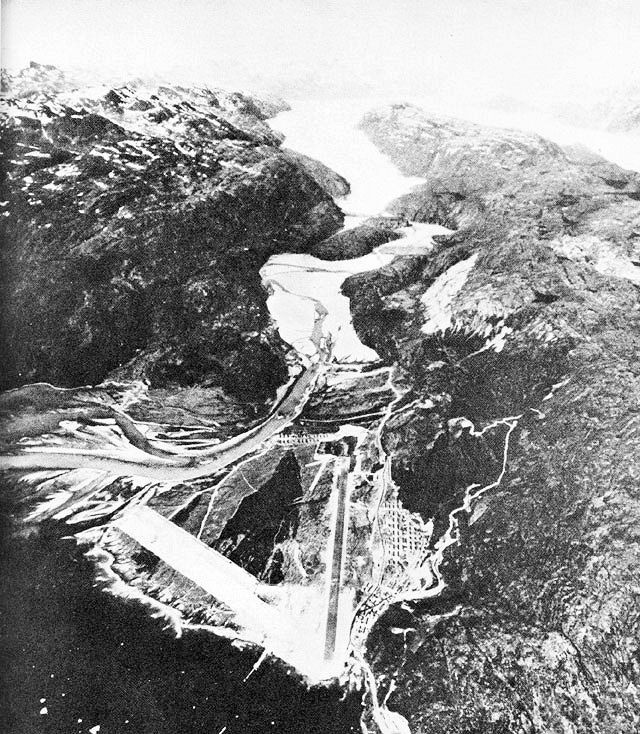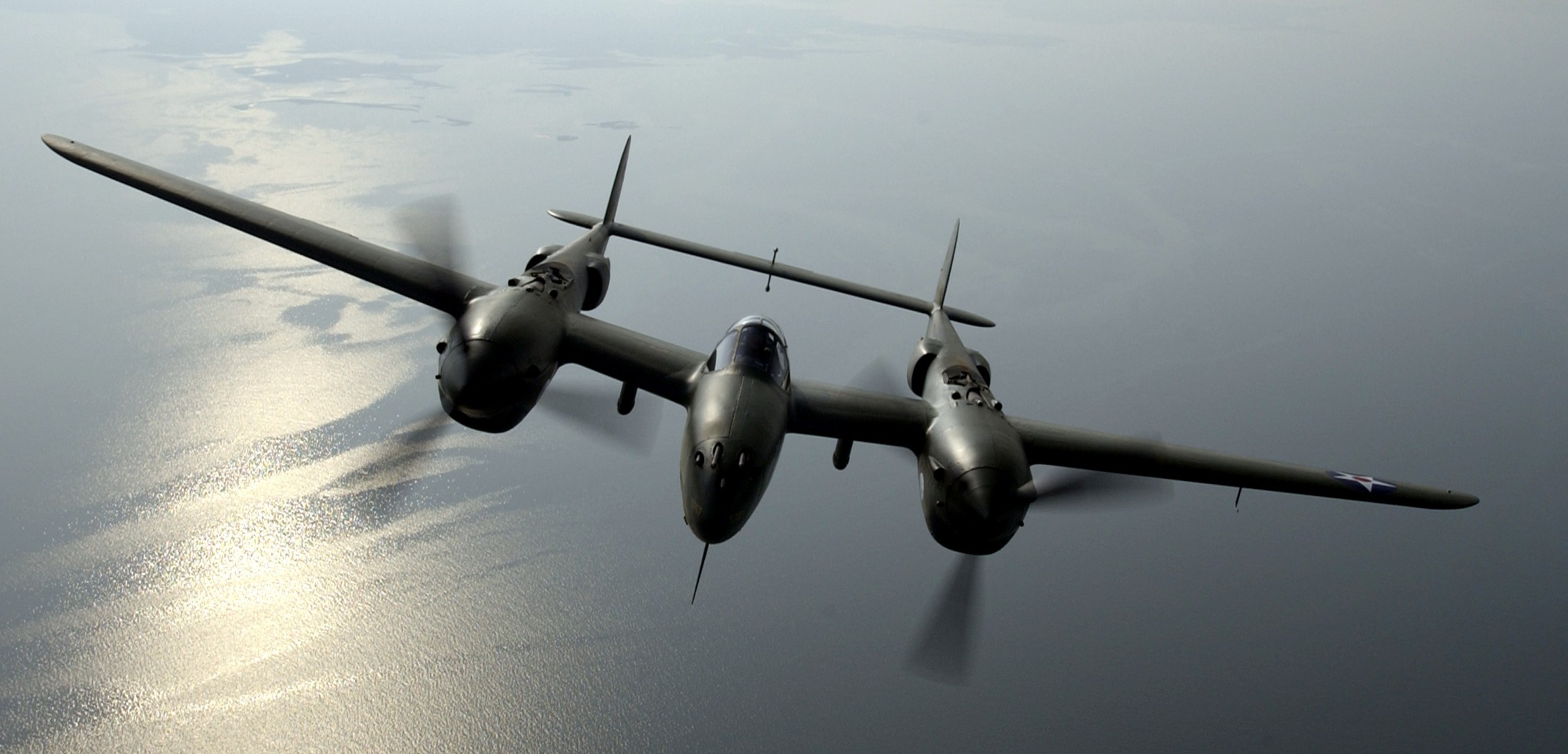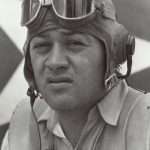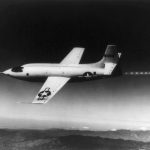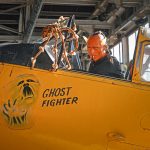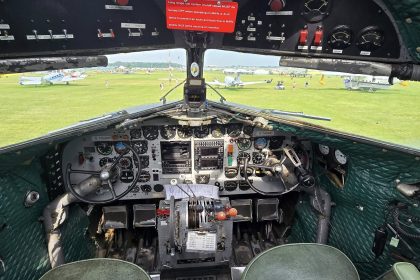by John M. Caratola, PhD
On July 15, 1942, a formation of six Lockheed P-38s and two B-17s from the US Army Air Forces (USAAF) were making their way across the northern Atlantic Ocean heading for Great Britain.[1] Using the call sign Tomcat Flight, the small P-38 fighters were escorted by the larger B-17 bombers that had a dedicated navigator and a radio operator on board shepherding their “little friends” on the long journey. While this area of the globe is known for its fickle weather, the summer months were generally considered the best time of year to transverse the expanse. However, on the third leg of the journey, running from Greenland to Iceland, the North Atlantic weather lived up to its unpredictable reputation. The formation ran into bad weather, experienced icing, and was unable to continue its eastward journey. Hoping to return to their point of departure at airfield “BLUIE WEST 8” in western Greenland, the P-38’s fuel status showed otherwise.[2] Because ditching in the frigid waters of the North Atlantic was a death sentence, the formation decided to land on a nearby ice cap on Greenland’s east coast.
The P-38s ran out of gas first, and a fuel-starved fighter plane tried to land on what appeared to be a solid sheet of ice. However, with the plane’s landing gear in the “down” position, when the wheels touched the surface the plane promptly flipped over.[3] While the pilot survived the mishap, what appeared to be a frozen sheet of ice was actually a morass of slushy ice warmed by the summer sun.[4] Seeing the upturned fighter, the other P-38s decided to make “gear up” landings and slide on the semi-hard surface. Lt Harry Smith throttled back his P-38’s engines, put his fuel selector valve to “cut off”, turned off his battery, and looked to stall his aircraft upon touchdown.[5] Hoping to slide to a stop rather than roll, his craft hit the surface with a thud as he rode the plane as if it were a twin-boomed toboggan. Coming safely to a stop, he detached his harness, annotated his logbook, and for the next few days camped out with the other members of the formation all of whom landed their craft in the same fashion.[6] It was the largest forced landing in Air Force history.[7] Rescued days later, Lt Smith and the other aircrews lived to tell the story of the ditching-but this story does not end there.
Lt Smith and the other members of this flight were but a few of thousands of aircrews that traversed the Atlantic Ocean in support of Allied operations during World War II. The Anglo-American Alliance was a strategic center of gravity and the partnership was reflected in the air bridge established during the global conflict. Flights over the northern Atlantic were a key component in support of Operation BOLERO, the buildup of American forces in the United Kingdom. However, the trans-Atlantic movement was not limited to an artic route. The southern Atlantic also played a key role in the delivery of aircraft, personnel, and cargo. While the Battle of the Atlantic and the Allied naval convoys’ struggle with the German U-Boat fleets became the stuff of legend, the flight ferry process that linked American production capacity and airpower to its allies in all theaters is often overlooked. Delivering the bounty of American manufacturing, and in the deployment of the US Army Force to the UK, required the building of a successful air bridge across the Atlantic. This could only be possible through an international effort with the cooperation of civilian, government, and military organizations and agencies.
Ferrying aircraft via air instead of surface movement was the most efficient and expeditious means of getting airframes to overseas theaters. While a surface lift obviously carried more cubic weight compared to an airlift, moving planes via ship was slower, often taking weeks because of weather and the U-Boat threat, as opposed to only days via air. Furthermore, planes shipped via sea-lift required preparation for the journey such as disassembly, cocooning and waterproofing, and finally embarkation. Subsequently, the opposite process occurred upon delivery.
As early as November 1940, the British contracted a Canadian company to ferry American bombers from the states to Newfoundland and then to Scotland-a distance of 2,100 miles.[8] Organized under the Atlantic Ferry Organization (ATFERO), these first aircraft were part of the American lend-lease program in the days before Pearl Harbor.[9] At this time, trained military aviators were in such short supply that the ATFERO effort employed the best qualified civilian pilots it could find. These aircrews comprised a mosaic of aviators which included, among others, British Overseas Airways Corporation (BOAC) captains, bush pilots, barnstormers, crop dusters, and on occasion – aviators with dubious backgrounds.[10]
During these initial operations, the United States was keen to maintain its perceived neutrality in the growing global conflict. The idea of Americans flying aircraft from domestic factories to belligerent nations was of geopolitical concern. As a result, Americans flew the newly-built planes to airfields adjacent to the Canadian border. At one location in Pembia, North Dakota, a farmer’s field was converted into a landing strip.[11] After landing, the aircraft were taxied within inches of the 49th parallel and then towed across the border by Canadian or Royal Air Force (RAF) representatives. In some cases, the Canadians towed the planes by hand or using a team of horses![12] Once across the border, the planes were refueled and then flown to other airfields deeper inside Canada. Obviously, this method was limited in its capacity once war demands increased.
On 10 November 1940, the first ATFERO planes, seven unarmed Lockheed Hudson bombers, took off from Gander, Newfoundland for Aldergrove in Northern Ireland.[13] This trip was fraught with danger given the marginal weather conditions, potential for icing, and of course mechanical failure. In addition to these challenges, navigation at these latitudes was equally uncertain.[14] Before rudimentary navigation aids were in place and with limited radio reception along the route, dead reckoning was the primary means for navigation.[15] Unfortunately, dead reckoning in the upper latitudes is problematic because magnetic variation near the North Pole is far greater than in more southerly regions and can easily throw off compass accuracy by as much as thirty degrees. Compounding the problem, compass deviation for a given aircraft (due to its own, unique set of magnetic properties) had to be accounted for. In addition to the magnetic concerns, weather conditions added to the potential for navigation error. Determining an aircraft’s wind drift and true airspeed with minimal meteorological support added another hazard to the journey.[16] Furthermore, navigation via pilotage was limited as much of the flight was over large expanses of open-ocean with few landmarks to reference.
Regardless of these perils, the first flight made it to Aldergrove successfully, despite oil leaks, compass failures, electrical problems, and severe turbulence.[17] One of the crewmen also experienced hypoxia – a loss of consciousness due to oxygen deprivation. This aeromedical condition remained a danger on this northern route as aircraft often flew to higher altitudes to avoid icing conditions. Above 10,000ft, crews were susceptible to loss of consciousness without some kind of supplemental oxygen equipment on board. During these early days, and before the widespread use of oxygen masks, crews used only a mouth held tube for supplemental oxygen.
Lasting ten hours, this sortie in November, 1940 delivered the first of almost 10,000 aircraft flown to the British Isles via the North Atlantic route. Despite this early success, by April 1941, it became apparent that the ATFERO program was inadequate to the challenge. The former head of RAF Fighter Command, the legendary Air Marshall Hugh Dowding, recognized its shortfalls and in July the effort was handed over to RAF Ferry Command. Helping Britain in their stand against the Axis Powers months earlier, the US Government had passed the Lend-Lease Act on March 11th, 1941. This bill enabled USAAF chief General ‘Hap’ Arnold to order American pilots to play an active role in the ferrying process.[18] After approval of Lend Lease, Arnold took direction from President Franklin Roosevelt who, on May 28, 1941, commanded the War Department “to cut through all of the formalities that are not legally prohibitive and help the British get this job done with dispatch.”[19] Official American participation in the effort meant a more robust and capable ferrying process.
Initial American expertise was supplied by Col Robert Olds (…and a then lesser-known officer named Curtis LeMay). Olds was assigned as head of the new Air Corps Ferrying Command on 29 May 1941.[20] The new organization was specifically tasked “to move aircraft by air from factories to such terminals as may be designated by Chief of the Air Corps…”[21] The first trans-Atlantic operations carried diplomats between the two continents in modified B-24s before the US officially became a belligerent. Called the “Arnold Line” these initial operations ran regularly from Bolling Field in Washington D.C. to Montreal, Quebec to Gander Lake in Newfoundland, across the Atlantic to Ayr, Scotland, and then back.[22] While carrying personnel, for the most part, this new command would eventually include all military air transportation services over the Atlantic.[23] Additionally, in the next few months, the USAAF began training 200 pilots for ferrying duty at Barksdale Field, Louisiana, and moved some 1,350 aircraft to various locations from west coast factories to the Atlantic coast.[24] After Pearl Harbor and America’s entry into the war, this ferrying effort expanded appreciably to support both the Atlantic and Pacific theaters of war.[25]
While flying over the North Atlantic was a primary route, the USAAF established other routes spanning the ocean. Southern routes were also established that linked the two hemispheres. Providing aircraft and supplies to Africa and Asia, a route from the continental United States to Puerto Rico, Belem and Natal, Brazil, and from there on to various airfields in western Africa was established. This route was put in place even before Pearl Harbor.[26] Crossing the narrowest part of the Atlantic, crews landed at Freetown, Sierra Leone, Liberia, or Bathurst in the modern-day state of The Gambia.[27] From here, planes were ferried to points north or continued across the African continent to Cairo, with many sent as far as the China-Burma-Indian (CBI) Theater. After the liberation of North Africa and Sicily in 1943, a third route was established which took a mid-Atlantic trek to Bermuda, the Azores, and then into the Mediterranean Theatre.[28]
Not all of these movements involved military crews and aircraft. At the beginning of US involvement in the war, Ferry Command had only eleven B-24s in its livery to service both Navy and Army requirements.[29] Just days after the attack on Pearl Harbor, on 14 December, a meeting between Federal and private business entities as well as civilian airlines allowed the military to gain access to large civilian flying boats and cargo aircraft including five Boeing 314 Clippers, two Martin M-130 flying boats, and five Boeing 307 Stratoliners.[30]
Given the demand for long-range airframes and trained crews, civilian airlines were also leveraged in the trans-Atlantic effort. Northeast Airlines moved supplies to Presque Isle, Maine and Goose Bay, Labrador and eventually to other bases, including some in the UK. Transcontinental, Western Air, and American Airlines also provided lift support to various points along the northern route. Along the southern route, Pan American Airways not only provided airlift services but also served as an agent of the US government by overseeing the Airport Development Program and establishing aviation-related facilities in foreign countries.[31] This was especially important in key locations like Brazil, which was apprehensive about Allied Forces using its airfields for military purposes.[32]
Pan American’s efforts were especially helpful with the first major movement of bomber aircraft deploying to the CBI theater. Called “Project X,” this movement leveraged the Southern Route to supply a majority of fifteen LB-30s and sixty-five B-17s to various points in South Asia.[33] These same routes were also used to supply the Soviet Union with 102 B-25 medium bombers as early as 1942.[34] When the North African campaign against the German Africa Corps and Field Marshall Ervin von Rommel started, the Southern Route was employed for the movement of 120 B-34s, 153 A-28s, 45 B-26s and 80 A-30s flown by British, American, and Pan American aircrews.[35]
Developing the Northern Route not only required new airfields and infrastructure, but also a myriad services including meteorological support. As arctic air moving south mixed with tropical masses moving north, stationary fronts with icing, turbulence, and thunderstorms often emerged unexpectedly.[36] To aid aviators in avoiding such hazards, weather stations with radio communications and forecasters were a requirement. Eventually, the USAAF established a weather support network from Maine to Iceland with the first station opening at Gander Lake, Canada in March 1941.[37] Weather support became an international effort as it also included Canadian and Danish stations.[38] For the eastern part of the route, the UK provided similar meteorological support for inbound aircraft.
Obviously, airfield improvement was a requirement before Operation BOLERO could begin in earnest. Therefore, in the spring of 1942, the US began building a 5,000ft airfield code-named BLUIE WEST-1 (BW-1) near the town of Narsarsuaq on the west coast of Greenland. Another field of the same length south of the first, called BLUIE WEST-8 (BW-8) was also constructed. In addition, the Canadians began improving the field at Goose Bay with rolled gravel while adding two further runways to handle the increased air traffic. In addition, the US provided infrastructure support at the Canadian base in order to house the required personnel, maintenance, fuel, and other aviation-related services.[39]
Much of this work was done in order to build up American forces in Europe for both ROUNDUP, an early plan for the assault of the European continent via the English Channel, and for POINTBLANK, the strategic bombing effort over Germany. The USAAF’s 8th Air Force spearheaded the strategic bombing effort from its bases in the UK. Anxious to prove the efficacy of the newly framed concept of daylight strategic bombardment, in summer 1942 the first formations were sent to England. These initial units were the 97th Bomb Group, 1st and 31st Pursuit Groups, the 5th Photo Reconnaissance Squadron, and the 5th Air Depot Group.[40] Coinciding with the air movement, the majority of the men and ground equipment for these units went by surface transport embarking from New York City.[41] With only skeleton crews ferrying the planes to Europe, these aviators were trained for combat missions and not necessarily long-range ferry operations. Therefore, before making their long journey, the crews received special training at Grenier Field, New Hampshire, and Dow Field, Maine earlier that spring.[42] Later, a unit of C-47s from the 60th Transport Group was also added to the armada. Conversely, the 31st Fighter Group’s single-engined P-39s were determined as being unsuitable for the trans-Atlantic trek and thus were shipped by surface. [43]
The B-17s and P-38s took off from Presque Isle on 23 June, and all successfully landed at Goose Bay. Days later they headed for the BLUIE WEST stations with nine B-17s reaching their destinations, six having to turn back, and three forced to land on the Greenland coast. However, by 1 July the first USAAF tactical aircraft landed in Preswick, Scotland.[44] By the end of August, 386 aircraft had crossed the North Atlantic and by the end of the year, 920 attempted the journey with 882 eventually reaching their intended destinations.[45] The USAAF was especially concerned with the P-38 Lightnings being able to make the journey. Fortunately, 173 of the 186 twin-engined fighters made it to the UK safely.[46] While the USAAF had predicted an overall 10 percent loss rate for such an operation, the actual attrition amounted to just 5.2 percent.[47] By the end of the war, almost 15,000 aircraft had traversed the Northern Route.[48] This was an impressive record for the time, especially because these aircraft were piloted by combat crews and not ferry pilots.
It is here where this article comes full circle. The initial movement of combat aircraft traveling the northern route in the summer of 1942 included Lt Smith and his P-38. Forgotten in the larger drama that was World War II, Tomcat Flight’s B-17s and P-38s which force landed on the ice were left in place and written off. Over the years the planes disappeared from sight, swallowed by snow and ice to become buried relics of a past war. However, some sixty years later, the story of the ill-fated formation came to light with a group of aviation enthusiasts who wanted to recover the now rare airframes. In 1992, Lt Smith’s fighter plane was located with ground-penetrating radar. The plane had shifted in the ice some two miles from its original location and was buried under 260ft of ice (25 stories deep).[49] Weeks later, and piece by piece, the P-38 was fully resurfaced and sent back to the United States. Starting in 1993, the badly bent aircraft was slowly rebuilt using many of its original parts.[50] In October 2002, the plane emerged, newly airworthy, from its reconstruction hangar. The P-38, now dubbed Glacier Girl, took to the air again for the first time since 1942. Appearing at air shows regularly, she is now a living testament to the crews that braved the perils of the trans-Atlantic journey and saved the world from Fascism.
[1] Fredrick Johnsen, “Glacier Girl Survives its Own Ice Age,” General Aviation News, May 20 2018, Available at: https://generalaviationnews.com/2018/05/20/glacier-girl-survives-its-own-ice-age/ (Accessed 10 May 2021); History of Glacier Girl-The Lost Squadron, https://p38assn.org/glaciergirl/history.htm. Accessed 25 May 2021; For simplicity, I will use the term US Army Air Force interchangeably with US Army Air Corps.
[2] History of Glacier Girl at https://p38assn.org/glaciergirl/history.htm.
[3] Ibid.
[4] Karen Jensen, “Iced Lightning” in Smithsonian Air and Space Magazine, January 1993.
[5] “Emergency Landing with Wheels Retracted,” Pilots Flight Operating Instructions for Army Model P-38 series. (Reprint) (Appleton WI; Aviation Publications), 40.
[6] Jensen, “Iced Lighting.”
[7] Ibid.
[8] Wesley Frank Craven and James Lea Cate, The Army Air Forces in World War II: Volume 1 Plans and Early Operations-January 1939 to August 1942, (Chicago, IL: University of Chicago Press, 1948), 313.
[9] Ibid., 313-314; Curtis LeMay and Mackinlay Kantor, Mission with LeMay (New York; Doubleday and Co, 1965), 198.
[10] Jeffrey Davis, “ATFERO: The Atlantic Ferry Organization,” Journal of Contemporary History, Jan, 1985, Vol. 20, No 1 (Sage Publications Ltd), pp 75. Available at https://jstor.org/stable/260491 (Accessed 12 May 2021).
[11] Kevin Rollason. “Emerson at War: Border communities farmers pulled their weight in the Second World War, dragging US made fighter planes destined for the Allied effort in Canada,” Winnipeg Free Press, Nov 9, 2010. Available at https://www.winnipegfreepress.com/local/field-of-schemes-emerson-at-war-564639352.htlm. (Accessed 23 May 2021).
[12] Ibid; LeMay and Kantor, Mission with LeMay, 200; Davis, “ATFERO: The Atlantic Ferry Organization,” 75.
[13] Oliver La Farge, The Eagle in the Egg (Cambridge MA; Riverside Press, 1949), 9.
[14] Benjamin Paul Hegi, From Wright Field, Ohio, to Hokkaido, Japan: General Curtis E LeMay’s Letters to His Wife Helen, 1941-1945, (Denton, TX: University of North Texas Press, 2015), 42.
[15] Ibid.
[16] LeMay and Cantor, 202.
[17] Davis, 76.
[18] Craven and Cate, Volume 1, 314; Martin Bowman, USAAF Handbook, 1939-1945, (Mechanicsburg PA: Stackpole Books, 1997), 13.
[19] Letter From President Roosevelt to Secretary of War Henry Stimson, 28 May, 1941 as reference in Craven and Cate, Volume 1, 316; La Farge, 11.
[20] Craven and Cate Volume 1, 316; LeMay and Kantor, Mission with LeMay, 200; Scottie L. Zamzow, Ambassador of American Airpower: Major General Robert Olds, (Maxwell AFB, AL: Thesis for School of Advanced Air and Space Studies, 2008), 65; Wesley Frank Craven and James Lea Cate, The Army Air Forces in World War II, Volume 7 Services Around the World, (Washington D.C.; Office of Air Force History, 1983 (Reprint), 4, 8; La Farge, 11.
[21] Craven and Cate, Volume 1, 316.
[22] La Farge, 24.
[23] Hegi, 39; Zamzow, 68; Craven and Cate, Volume 7, 8.
[24] Craven and Cate, Volume 1, 316.
[25] Craven and Cate Volume 7, 8.
[26] Craven and Cate, Volume 1, 319; Craven and Cate Volume 7, 6.
[27] Craven and Cate Volume 1, ibid.
[28] Craven and Cate, Volume 1, 312.
[29] Ibid., 352; Craven and Cate Volume 7, 20; La Farge, 2.
[30] Craven and Cate, Volume 1, Ibid; Craven and Cate, Volume 7, 21; La Farge, 2.
[31] Craven and Cate, Volume 1, 321-323. Craven and Cate, Volume 7, 11, 324; La Farge, 17.
[32] Zamzow, 69, 77-79.
[33] La Farge, 35.
[34] Craven and Cate, Volume 1, 338; Zamzow, 69; Aleksandr Akvilyanov, “The B-25 Mitchell in the USSR”. Available at https://lend-lease.net/articles-en/the-b-25-mitchell-in-the-ussr/. (Accessed 26 May 2021)
[35] Craven and Cate Volume 1, 340.
[36] Ibid., 345; Zamzow, 71.
[37] Craven and Cate, Volume 7, 321.
[38] Craven and Cate, Volume 1, 345; Craven and Cate, Volume 7, 321.
[39] Craven and Cate, Volume 1, 364.
[40] Ibid., 639. Roger Freeman, The Might Eighth; A History of the Units, Men, and Machines of the US 8th Air Force, (New York; Orion Books, 1970), 6-7; Kit C Carter and Robert Mueller, US Army Air Force in World War II: Combat Chronology 1941-1945, ( Washington D.C.; Office of Air Force History, 1991), 20.
[42] Craven and Cate, Volume 1, 641.
[43] Freeman, 6-7.
[44] Craven and Cate, Volume 1, 64, 644; Freeman, 7; Carter and Mueller, 24.
[45] Craven and Cate, Volume 1, 645.
[46] Ibid.
[47] Ibid.
[48] Craven and Cate, Volume 7, 113.
[49] https://p38assn.org/glaciergirl/recovery.htm
[50] Ibid.







